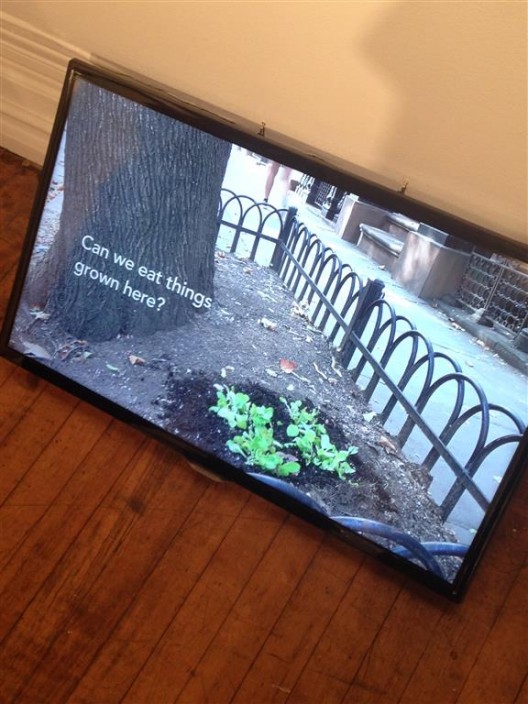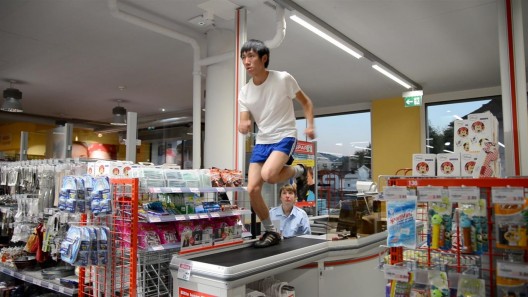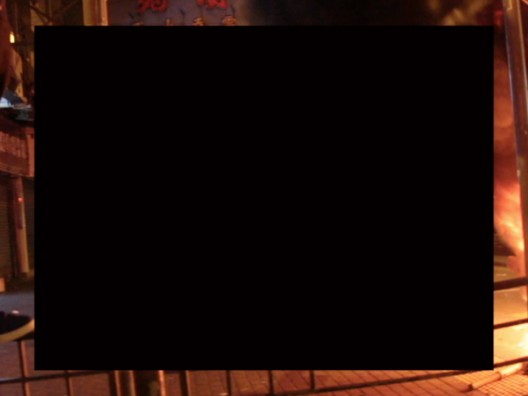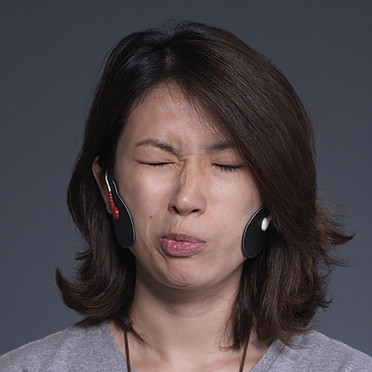La Mama Galleria (47 Great Jones St, New York, NY 1000), Sept 15 – Oct 8, 2016
In a video of his performance “Farming the City”, a caption in amiable white lettering accompanies footage of Tsui Kuang-Yu planting seedlings in the dirt around a tree on the sidewalk; it wonders, “Can we eat things grown here?”
The question is less straightforward than it sounds “here” in the contemporary city, and draws towards it further questions, for example about public and private space, individual agency, need, nature and artificiality, social conduct, economy, and time. “Farming the City” was part of “No Cause for Alarm”, an exhibition of works by eleven artists from China, Taiwan, and Hong Kong assembled for the theme of anxiety in contemporary urban life. Curated by Chen Wei-Ching and Ying Kwok, the show envisioned “suggestions and consolations” and a humorous perspective from which to view daily life which, for the majority of people, plays out in a city.
Tsui’s attempt to grow food in the street furniture fails, quashing the suggestion of self-sufficiency (or just some supplementation) without a shop, transaction, and shared habitual structure. “The city seems to be all about how to accommodate to our needs in daily life” (sic.), he muses, with an affected innocence. The sight of his hands patting soil in around the seedlings and their small shock of green among the greyer hues of sidewalk and stoops proves a truthful exercise in relative scale, intimacy, and futility.
Sustainability in cities is less about objective resources than subjective ones, and despite increased interest in mind-clearing self-help activities like yoga in metropolises like New York, people are struggling with what Tony Crabbe recently called “an infinite world” in which work, thanks to technology, is not statistically more, but is always accessible. Wang Ding-Yeh’s painful “Portraits under electric shock” (2014) and “Madness electric shock—Flag song” (2014) could scarcely do more to illustrate the unnatural compulsion to continue and to keep doing under convulsive and ambiguous pressure.
Elsewhere in the show, physical action was put to more sublimely satiric ends. In Musquiqui Chihying’s applaudable video piece “The Jog” (2014), a man runs against the direction of a conveyor towards the checkout in a supermarket; the second video channel in which he stretches in the aisles is surplus to the incisive distillation of flows—at once economic, individual and societal, of leisure and commerce, convenience and resistance—that are conveyed by the runner’s footfalls on the belt. The exhibition text spoke compellingly about the rolling belt implying “the objective of consumption behaviour and the end of movement”, a statement somehow helped by slight vagueness in its English translation.
The shortening and narrowing of perception, too, are general effects of prevalent technology and saturated environments. Elvis Yip Kin Bon’s brilliant wall installation of 260 newspaper clippings, all excerpts from a speech by Qiao Xiaoyang (as former chairman of the Hong Kong Special Administrative Region [HKSAR] Basic Law Committee), sees each cut away differently and zipped into a cellophane bag. According to Yip, the work is meant as an exercise in defiance against “evidence of a general absurdity” conveyed in Qiao’s words; the scraps provoke the speech to speak against itself by amplifying, isolating, and collaging its quotes into an altogether different medium to better reflect its message. Yip’s work—long and meticulous in method and subversive in effect, opposes different forces that act on perception.
In its use of black to hide content in a video, Ocean Leung’s “Black Shapes” (2016), in which eponymous black areas obscure footage of a fire and billowing smoke on a street at night, also implies a response to this situation by evoking censorship. At first hand, however, one thinks more simply of the challenge to clear, focused vision thanks to the clamor of varied focal points for attention. Nearby, the acrylic and stainless steel wall piece by Chou Yu-Cheng with a deliberately long title (recounting all the words printed at the bottom of the panel)—“Chemical Gilding, Keep Calm, Galvanise, Pray, Gradient, Ashes, Manifestation, Unequal, Dissatisfaction, Capitalise, Incense Burner, Survival, Agitation, Hit, Day Light. II” (2016), aims to look at the socio-political chaos currently contained by capitalism. While these two pieces are fairly literal in responding to the current situation, one wonders whether this isn’t an apt approach.
Writing “In Praise of Idleness” in the early 1930s, Bertrand Russell imagined a world where, thanks to advancements in technology, people need only work for four hours a day, with far more time for productive leisure. Little could he foresee the amalgamation of the two, when so much and so many different economies—not only of money, but also of time and emotion—combine to generate the “infinite world” most prevalent in urban centers. This is a state of being which entails high levels of ambiguity (arguably, this is not acknowledged often enough), and for which there is no real strategy for those overwhelmed by it. Under the droll public service announcement manner of its title, the artists in “No Cause for Alarm” admitted this ambiguity, along with states including inertia, innocence, resistance or absurdity which could arise as a result. More than this, they seem to seek these states as channels for empathy and relief—sensations on which this show finally, if indirectly, insisted.
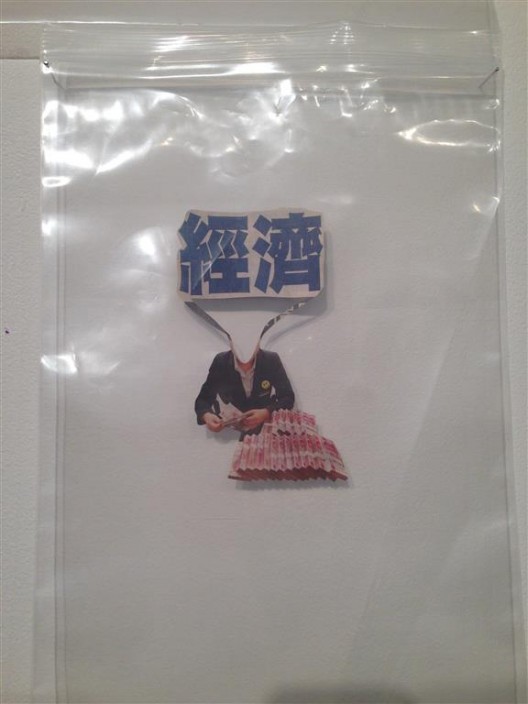
Yip Kin Bon, “Speech from Qiao Xiao Yang on 24th March 2013″, (detail), 260 pieces of newspaper, 2013 – 2015

